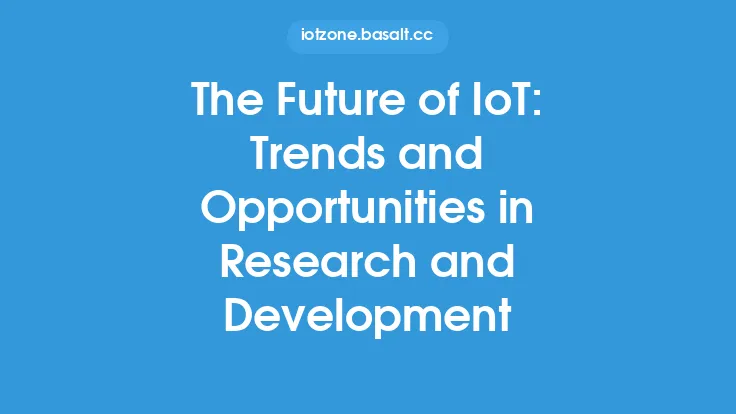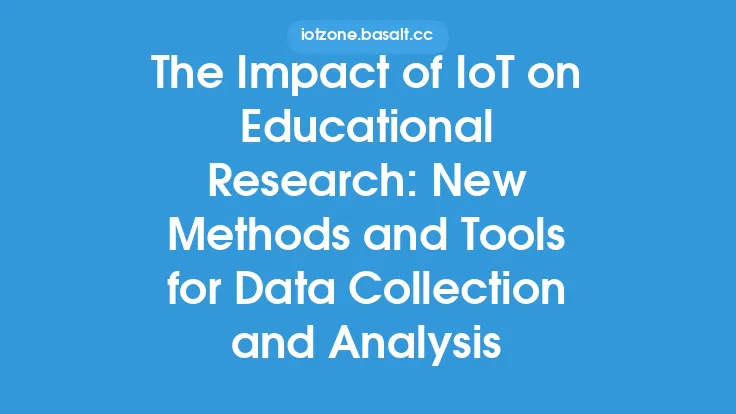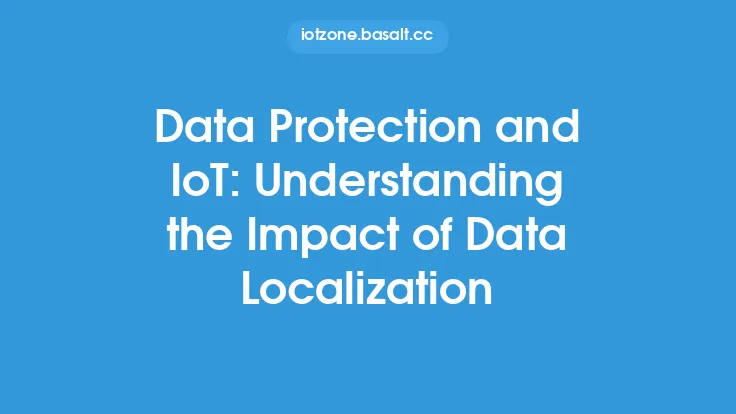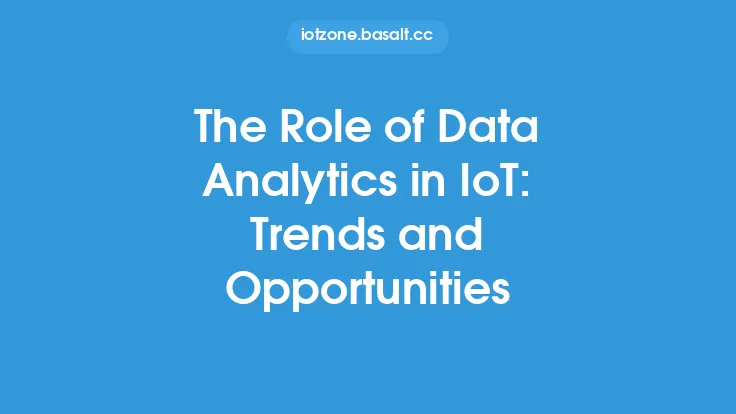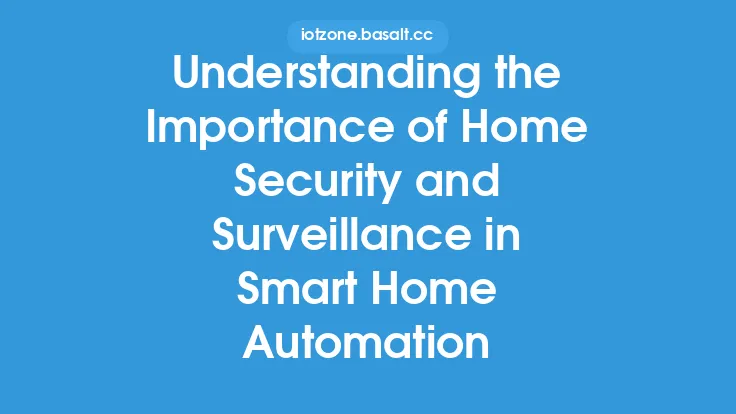The Internet of Things (IoT) has revolutionized the way we live, work, and interact with our surroundings. As the number of connected devices continues to grow, the importance of IoT research and development (R&D) has become increasingly evident. IoT R&D involves the systematic investigation and creation of new IoT technologies, products, and services. It encompasses a broad range of activities, from conceptualization and design to testing and deployment. In this article, we will delve into the fundamentals of IoT R&D, exploring the key concepts, methodologies, and technologies that underpin this rapidly evolving field.
Introduction to IoT R&D Methodologies
IoT R&D methodologies are the frameworks and approaches used to guide the development of IoT systems and applications. These methodologies are designed to ensure that IoT R&D is conducted in a systematic, efficient, and effective manner. Some of the most commonly used IoT R&D methodologies include Agile, Scrum, and Waterfall. Agile and Scrum are iterative and incremental approaches that emphasize flexibility, collaboration, and continuous improvement. Waterfall, on the other hand, is a linear and sequential approach that emphasizes predictability and control. The choice of methodology depends on the specific requirements and goals of the IoT R&D project.
Key Technologies in IoT R&D
IoT R&D relies on a range of technologies, including hardware, software, and networking protocols. Some of the key technologies used in IoT R&D include microcontrollers, sensors, actuators, and communication protocols such as Wi-Fi, Bluetooth, and Zigbee. Microcontrollers are small computers that are used to control and interact with IoT devices. Sensors and actuators are used to collect and respond to data from the physical environment. Communication protocols enable IoT devices to exchange data and coordinate their actions. Other important technologies in IoT R&D include artificial intelligence (AI), machine learning (ML), and data analytics. AI and ML are used to analyze and interpret IoT data, while data analytics is used to extract insights and meaning from large datasets.
IoT R&D Process
The IoT R&D process involves several stages, from conceptualization and design to testing and deployment. The first stage is conceptualization, where the idea for an IoT system or application is generated and refined. This is followed by the design stage, where the architecture and components of the IoT system are defined. The next stage is prototyping, where a working model of the IoT system is built and tested. This is followed by the testing and validation stage, where the IoT system is evaluated and refined. Finally, the IoT system is deployed and maintained, with ongoing monitoring and updates to ensure optimal performance.
IoT R&D Tools and Platforms
IoT R&D tools and platforms are the software and hardware used to support the development of IoT systems and applications. Some of the most commonly used IoT R&D tools and platforms include Arduino, Raspberry Pi, and IoT development kits. Arduino and Raspberry Pi are popular platforms for building and prototyping IoT devices. IoT development kits provide a comprehensive set of tools and components for developing and testing IoT systems. Other important IoT R&D tools and platforms include cloud-based services such as AWS IoT and Google Cloud IoT Core. These services provide a range of features and functionalities for managing and analyzing IoT data, including data processing, storage, and analytics.
Challenges and Opportunities in IoT R&D
IoT R&D is a complex and challenging field, with many opportunities and obstacles. Some of the key challenges in IoT R&D include security, privacy, and interoperability. IoT systems and devices are vulnerable to cyber threats and data breaches, which can compromise security and privacy. Interoperability is also a major challenge, as IoT devices and systems often use different communication protocols and data formats. Despite these challenges, IoT R&D offers many opportunities for innovation and growth. The increasing demand for IoT systems and applications is driving investment and innovation in the field, with new technologies and applications emerging all the time.
Future Directions in IoT R&D
The future of IoT R&D is exciting and rapidly evolving. Some of the key trends and directions in IoT R&D include the increasing use of AI and ML, the growth of edge computing, and the development of new IoT technologies such as 5G and LPWAN. AI and ML are being used to analyze and interpret IoT data, enabling new applications and services such as predictive maintenance and smart cities. Edge computing is becoming increasingly important, as it enables IoT data to be processed and analyzed in real-time, reducing latency and improving performance. New IoT technologies such as 5G and LPWAN are also emerging, enabling faster, more reliable, and more efficient communication between IoT devices.
Conclusion
In conclusion, IoT R&D is a complex and rapidly evolving field, with many opportunities and challenges. By understanding the fundamentals of IoT R&D, including the key concepts, methodologies, and technologies, developers and researchers can create innovative and effective IoT systems and applications. The IoT R&D process involves several stages, from conceptualization and design to testing and deployment, and relies on a range of technologies, including hardware, software, and networking protocols. As the demand for IoT systems and applications continues to grow, the importance of IoT R&D will only continue to increase, driving innovation and investment in the field.
